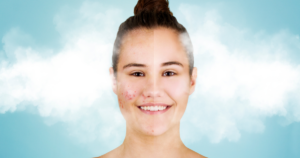The Best Fluffy Pancakes recipe you will fall in love with. Full of tips and tricks to help you make the best pancakes.
How to Become a Dermatologist: Career Guide, Courses and Scope

In the specialized specialty of medicine known as dermatology, diseases of the skin, hair, and nails are identified and treated. Dermatologists are essential in helping patients manage a variety of skin problems and maintain healthy skin.
How to Become a Dermatologist

Academic Prerequisites
You must complete a challenging educational program before beginning a career in dermatology:
Pre-Medical Training
Build a solid pre-medical education foundation before anything else. To get ready for medical school, your undergraduate courses should cover biology, chemistry, and physics.
Medical College
You must enroll in medical school after earning your bachelor’s degree; this is normally a four-year program. You will learn the principles of medicine throughout this period.
Residency Education
Aspiring dermatologists must undergo a dermatology residency program after medical school, which typically lasts three to four years. Under the supervision of skilled dermatologists, this comprehensive program offers practical experience in the diagnosis and treatment of a variety of skin problems.
Certification and Licencing
To practice independently after successfully completing your residency, you must get a medical license. A frequent criterion in the US is passing the American Board of Dermatology (ABD) exam in order to become board-certified.
Different subspecialties in dermatology
There are a number of fascinating subspecialties in dermatology:
Dermatology in medicine: centered on identifying and treating medical skin disorders such as psoriasis, skin cancer, and acne.
Operative Dermatology: focuses on doing cosmetic surgery or performing surgical procedures to remove skin blemishes or tumors.
Dermatology in cosmetics: focuses on non-invasive and minimally invasive procedures, including laser treatments, chemical peels, and Botox injections, to improve the appearance of the skin.
Children’s dermatology is adapted to the special requirements of children, addressing skin problems frequently in pediatric patients.
Qualifications and Skills of a Dermatologist

Dermatologists need a special set of abilities:
Pay Close Attention: Accurate evaluation and diagnosis of skin diseases are essential. Dermatologists frequently deal with patients’ skin issues and aesthetic concerns that could harm their self-esteem.
Strong Communication Skills: For patients to understand diagnoses and treatment options, effective communication is crucial.
Job Prospects and Scope of Dermatology
The need for dermatologists is growing as the population ages and people’s knowledge of skin health rises. Dermatologists may work in private practices, hospitals, or academic institutions, among other places.
Pros and Cons of a Dermatology Career
Pros:
- High potential for income.
- The chance to positively influence patients’ lives.
- A variety of scenarios and a patient population.
Cons:
- Extensive requirements for education and training.
- Possibility of extended workdays.
- Managing moral difficulties and patient expectations.
Dermatology is a dynamic area that necessitates continual education to stay abreast of the most recent developments in therapies, technologies, and research.
Salary and Benefits
Dermatologists often make a good living, with location, experience, and specialty all having an impact on pay.
Dermatology’s ethical considerations
Dermatologists are required to uphold moral principles such as patient confidentiality, informed consent, and providing accurate diagnoses and recommendations.
Organisations and Associations in Dermatology
The American Academy of Dermatology (AAD) and the American Board of Dermatology (ABD) are two pertinent organizations and associations. For dermatologists, these organizations offer materials, opportunities for networking, and assistance.
Treatments and Procedures in Dermatology

A wide variety of surgeries and treatments are carried out by dermatologists, including:
- Biopsies: removing skin samples for analysis.
- Cryotherapy: Using extremely cold to treat skin lesions is known as cryotherapy.
- Mohs surgery: Using a specialized procedure known as Mohs surgery, skin cancer can be removed while protecting good tissue.
- Laser therapy: Using lasers to treat a variety of skin issues, including scar and hair removal.
- Dermabrasion: mechanical exfoliation that enhances the texture of the skin.
- Patch testing: Locating allergens that are responsible for skin diseases like dermatitis.
Patient Diversity and Interprofessional Cooperation
Patients of diverse ages, socioeconomic backgrounds, and skin types interact with dermatologists. Their work is varied and collaborative because they frequently deal with other medical specialists, such as oncologists in situations of skin cancer.
Global Possibilities
Opportunities for dermatologists exist all across the world. In addition to their clinical work, some dermatologists offer their services on medical missions around the world to treat skin diseases in impoverished regions.
Scholarly work and publications
To advance the field, many dermatologists conduct research. To better understand and treat skin illnesses, this may entail clinical trials, case studies, or publication contributions.
Misconduct Insurance
Dermatologists frequently have malpractice insurance to defend themselves against lawsuits involving medical mistakes or negligence.
Education of Patients
In order to lower the risk of skin illnesses and early aging, dermatologists frequently teach their patients about preventive skin care practices and sun protection.
New Technologies in Telemedicine
With the development of technology, some dermatologists are now able to diagnose and treat some skin disorders over the internet, expanding access to care.
Reviews from patients and reputation
Positive patient testimonials and recommendations from other patients help dermatologists establish a solid reputation. For a practice to be successful, maintaining excellent patient relationships is crucial.
Inclusion and Diversity in Dermatology
To better serve a varied patient group, initiatives are being made to increase dermatology’s diversity and inclusiveness. Initiatives are being taken to reduce healthcare inequalities and provide fair access to care.
Dermatology in the Environment
Skin health may be impacted by environmental factors including pollution and climate change. Dermatologists may participate in advocacy efforts and research pertaining to these problems.
Approaching Skin Health Holistically
Some dermatologists take a holistic approach to patient care, taking into account lifestyle choices, dietary needs, and mental health in addition to medical interventions.
Mentoring and ongoing learning
Mentorship programs and chances for ongoing learning help aspiring dermatologists hone their clinical abilities and stay up to date on the latest trends.
Also Read: The Next Step in your Radiography Career – Specialisation and Opportunities
Conclusion
A career as a dermatologist combines knowledge of medicine, empathy for patients, and a commitment to skin health. It provides a variety of chances for both career and personal development. Developing a career in dermatology could be a rewarding and lasting path if you have a passion for the subject and a dedication to helping people have healthy skin.
References
- Career choices in dermatology: https://pubmed.ncbi.nlm.nih.gov/20028404/
- Career Choices and Career Progression of Junior Doctors in Dermatology: Surveys of UK Medical Graduates: https://www.ncbi.nlm.nih.gov/pmc/articles/PMC5892268/b
- Career preferences of medical students: influence of a new four-week attachment in general practice: https://pubmed.ncbi.nlm.nih.gov/8995851/




